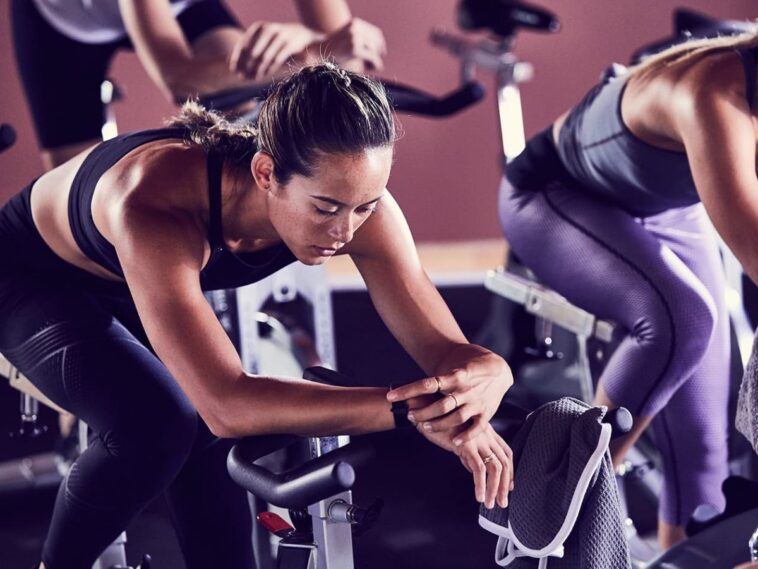Indoor cycling and running have taken the fitness world by storm, offering convenient alternatives to outdoor workouts. But as with any popular trend, myths and misconceptions abound. These can range from harmless misunderstandings to misleading information that could affect your fitness journey.
The purpose of this article from GymWarehouse is to set the record straight. We’ll debunk some of the most common myths surrounding indoor cycling and running, replacing them with facts to help you make informed decisions about your workouts.
The Rise of Indoor Cycling and Running
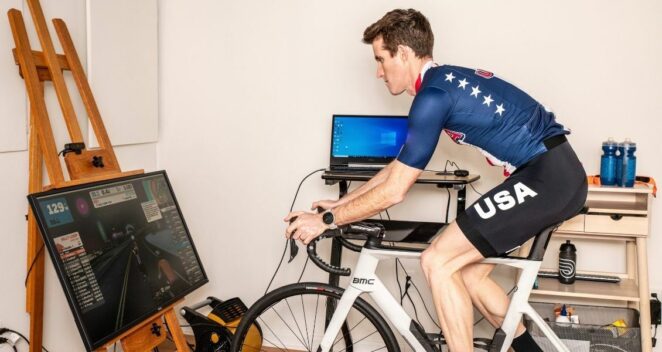
Indoor cycling, often facilitated by exercise bikes, and treadmill running have evolved significantly over the years. What started as basic machines for indoor training have now become high-tech equipment with various features like virtual classes and performance tracking. These forms of indoor cardio have gained immense popularity, especially in the age of smart fitness.
Why Myths and Misconceptions Exist
The rise in popularity of treadmill running and exercise bike cycling has led to a proliferation of information, both accurate and misleading. Myths often arise from misunderstandings, outdated information, or even marketing tactics that exaggerate benefits or downplay drawbacks.
Myth 1 – Indoor Cycling is Easier than Outdoor Cycling
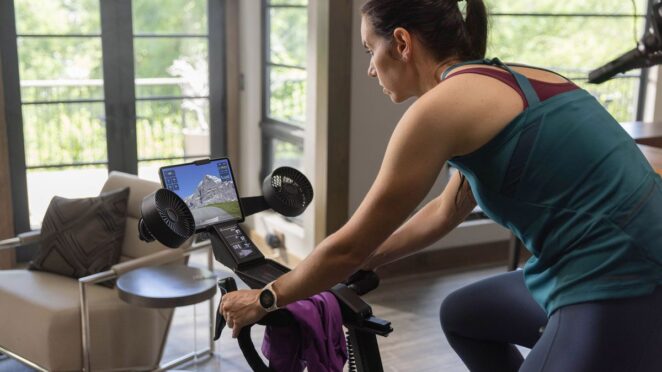
The Argument for the Myth
A common belief is that indoor cycling on an exercise bike is inherently easier than outdoor cycling. This myth often stems from the idea that indoor environments lack the natural elements like wind resistance and varying terrains that make outdoor cycling challenging.
Scientific and Practical Evidence Debunking It
Contrary to this belief, scientific studies show that indoor cycling can be as strenuous, if not more so, than its outdoor counterpart. Exercise bikes often come with resistance settings that can simulate the challenges of outdoor terrains. Additionally, the controlled environment allows for targeted, high-intensity workouts without the interruptions of traffic or stoplights.
Myth 2 – Running on a Treadmill is Bad for Your Knees
The Argument for the Myth
One prevalent myth is that running on a treadmill is particularly hard on your knees. This belief often stems from the idea that the repetitive motion and the surface of the treadmill can lead to joint strain or injury.
Research and Expert Opinions Debunking It
However, research suggests that treadmill running is not inherently bad for your knees. In fact, many modern treadmills are designed with cushioned belts to reduce impact, offering a softer landing compared to asphalt or concrete roads. Expert opinions also indicate that proper running form and technique are more critical factors in preventing knee injuries than the running surface itself.
Myth 3 – Indoor Workouts are Less Effective for Weight Loss

The Argument for the Myth
A common misconception is that indoor workouts, whether on a treadmill or an exercise bike, are less effective for weight loss compared to outdoor activities. This myth often stems from the belief that the controlled environment and lack of natural elements make indoor workouts less challenging.
Comparative Studies and Facts that Disprove It
However, comparative studies show that indoor workouts can be equally effective for weight loss when performed at the same intensity as outdoor workouts. The key factor is not the location but the effort you put into the exercise. Indoor equipment like treadmills and exercise bikes often come with features that allow you to track your performance metrics, making it easier to maintain the intensity required for effective weight loss.
Myth 4 – You Don’t Need Special Gear for Indoor Activities
The Argument for the Myth
Some people believe that because you’re indoors, away from the elements, you don’t need specialized gear for activities like treadmill running or cycling on an exercise bike. The myth suggests that any comfortable clothing and footwear will suffice.
Importance of Proper Attire and Equipment
However, the importance of proper attire and equipment can’t be overstated. Specialized athletic shoes provide the necessary support and cushioning, reducing the risk of injury. Moisture-wicking clothing can help manage sweat, improving comfort and performance. For cycling, padded shorts can make a significant difference in comfort during longer sessions.
Myth 5 – Indoor Cycling and Running are Boring
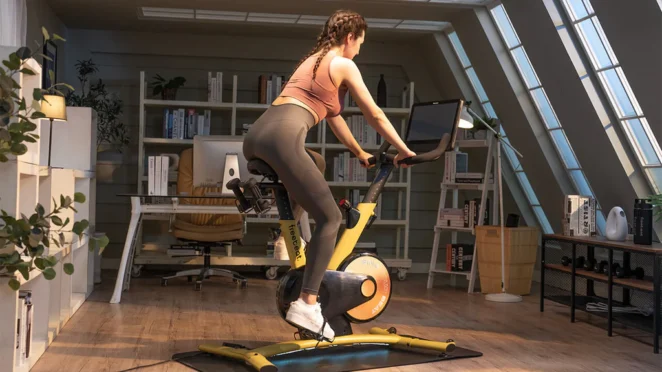
The Argument for the Myth
A common perception is that indoor activities like treadmill running or cycling on an exercise bike are monotonous. The lack of changing scenery and natural elements is often cited as the reason for this boredom.
Ways to Make Indoor Workouts Engaging and Fun
However, there are numerous ways to keep indoor workouts engaging. Many modern treadmills and exercise bikes come with interactive features, such as virtual classes or scenic routes displayed on screens. You can also diversify your workout routine by incorporating interval training, listening to podcasts, or even watching your favorite shows while exercising.
Myth 6 – Indoor Workouts Don’t Improve Outdoor Performance
The Argument for the Myth
Some people argue that training on a treadmill or an exercise bike won’t translate to improved performance in outdoor activities. The belief is that the controlled indoor environment lacks the variables—like wind resistance and terrain—that you encounter outdoors.
Evidence Showing Benefits for Outdoor Activities
However, evidence suggests that indoor training can indeed benefit your outdoor performance. Controlled settings allow for targeted training, helping you focus on specific aspects like speed, endurance, or hill climbing.
Studies have shown that athletes who incorporate indoor training see improvements in their outdoor performance metrics, such as time trials for cyclists and race times for runners.
Myth 7 – It’s Impossible to Measure Accurate Metrics Indoors
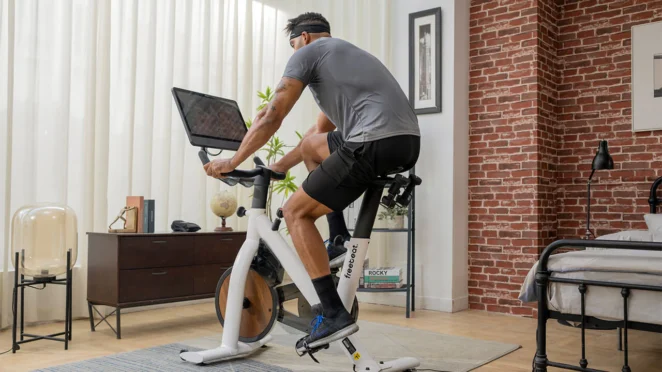
The Argument for the Myth
A lingering myth is that indoor workouts on a treadmill or exercise bike can’t provide accurate performance metrics like speed, distance, or calories burned. Skeptics often point out that the controlled environment and lack of external factors make the data unreliable.
Technology and Methods for Accurate Tracking
Contrary to this belief, modern indoor exercise equipment often comes equipped with advanced technology for precise metric tracking. Treadmills and exercise bikes now feature calibrated sensors and software that can measure your performance with a high degree of accuracy. Additionally, you can use wearable devices like heart rate monitors to supplement the built-in tracking features.
How to Make Informed Choices
Importance of Doing Your Own Research
While myths and misconceptions are common, they shouldn’t dictate your fitness choices. It’s crucial to do your own research, especially when it comes to activities like treadmill running or cycling on an exercise bike. Personalized information is often more valuable than generalized beliefs.
Tips for Finding Credible Sources
When researching, look for information from reputable organizations, peer-reviewed studies, or experts in the field of fitness and exercise science. Websites with a .edu or .org extension are often more reliable than commercial sites. Additionally, consider consulting with healthcare providers or certified fitness trainers for personalized advice.
Conclusion
We’ve tackled some of the most prevalent myths surrounding indoor cycling and running, from the supposed lack of effectiveness for weight loss to concerns about knee health. The evidence shows that both treadmill running and exercise bike cycling can offer robust workouts that are effective, safe, and even beneficial for outdoor performance.
As you consider incorporating these indoor activities into your fitness routine, remember to approach them with a fact-based perspective. Myths and misconceptions may be widespread, but they shouldn’t deter you from taking advantage of the convenience and versatility that indoor workouts offer.



